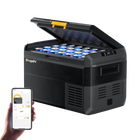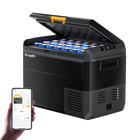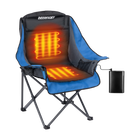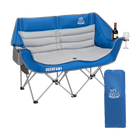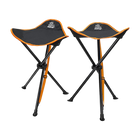What are solar panels made of?

Undoubtedly, solar energy is among the cheapest and one of the cleanest green energy options available in the market. People are still puzzled, about how something like solar PV can be affordable and efficient while providing quality energy watt after watt.
To know about the given question, we’ll have to understand the basic structure of solar panels, how they are made, how solar energy works, and the different parts of solar panels. The panels that are conveniently available in the market are made up of different cells like monocrystalline, thin film silicon, or polycrystalline material.
- What are the different components used in making solar panels?
- What are monocrystalline, polycrystalline, and amorphous solar panels?
- Key points related to solar panels
What are the different components used in making solar panels?
The stuff that is used to build the cells for solar panels is almost solar panels themselves. Within the process of constructing solar panels, six different components are assembled cooperatively to build a working solar module.
The components that are brought together to make a working solar panel are glass sheets, standard 12V wire, bus wire, metal frame, and silicon solar cells. If manufacturing different things are your hobby and you are curious about what solar panels are made of, I'll not make you wait anymore, let’s jump into the list straight so you can manufacture your own, by yourself. A solar panel consists of the following materials:

Glass sheet
A glass sheet is actually a slim layer of glass, which is almost 6-7 millimeters thin. It works as a protector for silicon solar cells. Premium and quality solar panels consist of glass sheets on the upper surface of the solar modules to add strength and durability to the silicon photovoltaic and its elements.
The manufacturers have further given a protective layer to the back of the panel. Additionally, a protective sheet and a casing for insulation beneath the glass interior have been placed, this case and sheet are used to reduce the heat and to maintain the humidity inside the panel.
Insulation Casing
The casing for insulation is quite important because the heating up of the panel can cause a reduction in the ability of power. The producers must go for extra large lengths of sheets and casings for insulation to make sure the light is captured perfectly by the panels without being overheated.
Silicon solar cells
The first form of solar cell technology and the main component of solar panels is silicon solar cells. It has been used in electrical items as a main factor for decades. When the ‘’first generation’’ of solar panels was introduced, it grabbed up 90% of the solar cell market in its hands.
Sunlight is converted into electricity by silicon solar cells using the photovoltaic effect. Between the glass panels, they are united strongly in a matrix-like structure. These cells connect and interact with the glass wafer sheet by which the charge is produced and hold the key importance in a solar panel.
Making Solar Cells
The mixture of crystalline and boron or gallium is known as P-type or N-type solar cells which create silicon ingot. Cells are made to conduct electricity by adding phosphorus to the mixture. Later on, the silicon ingot is chopped into thin layers and coated with an anti-reflective sheet. After that, thin chopped pieces are further cut down into cells to make them electricity conductors.
Bond of solar cells to create a panel
Once phosphorus grants the silicon wafers an electrical charge, solar cells are connected to each other by metal connectors, this process is called soldering or bonding.
Placing a back sheet, front glass layer, and frame
Below solar cells, there is a sheet placed for protection, which is usually made up of high-quality, ultra-durable, and strong material. Once it is placed, a thin layer of the glass sheet is installed on the top of the solar cells to filter the sun rays into the solar cells. A glue called ethylene vinyl acetate is used in the pasting process of the thin layer of the sheet. Now, a frame is surrounded by all of these elements.
Setting down the junction box
Once a solar panel is ready, a junction box is connected to it. A junction box is used to prevent any damage or harm to the solar panel’s wiring in order to maintain the flow of energy from the panel to the inverter and to stop the flow of electricity in the reverse direction.
This programmability is crucial in the conditions when the solar panel isn’t producing energy due to fault, in which the panel itself uses all the energy it has produced. A junction box stops the reverse flow of electricity to make sure you are getting the most of its advantage.
Quality testing
Before a solar panel is delivered to the market, it is professionally analyzed under standard test conditions (STC) to make sure it is giving its best performance, efficiencies, and all the services the manufacturer has promised in their ads or technical specification sheets.
Metallic frame
There are many benefits of having a metal frame for your solar panels such as protection against different weather conditions, and critical situations, improvement of durability, and holding different parts of the solar panel together.
Wiring
Standard 12V wire
It is basically a low-voltage electric circuit that is mostly used in batteries to produce large amounts of electric power. A house requires more electric power as compared to a shop, which means we will be needing big 12V cable wires. The amount of energy being transferred to your inverter is controlled by a standard 12V wire. So, using an efficient quality wire also gives a helping hand to the module to make its operation optimized.
Bus wires
Bus wires are used for the parallel connection of silicon solar cells to each other. These wires are covered in a thin layer of solder so that it can be easy for soldering in the future, and are thick enough to carry electric charges easily.
What are monocrystalline, polycrystalline, and amorphous solar panels?
Solar panels are made up of dozens of different elements silicon is the most important element. Silicon is a semiconductor material and it can act as a conductor and insulator both under different conditions. Unlike a typical metal, however, silicon gets better at conducting electricity as the temperature increases. As soon as the rays of light spread upon silicon cells, the electrons present in them start moving, which eventually makes the electricity flow. This event is called the photovoltaic effect.
The panels fabricated through these cells come in different modifications as follows:
1) Monocrystalline solar panel
2) Polycrystalline solar panel
3) Amorphous solar panel
Monocrystalline Solar Panels
These panels are made in silicon wafer formats and are produced from a single massive silicon block. Cutting of silicon wafer is included in the production process so that it can be attached to the surface of solar panels. Studies have spelled out that, monocrystalline solar cells are way more efficient as compared to polycrystalline solar cells. Making monocrystalline wafers requires a large amount of labor work, and is obviously more expensive than polycrystalline solar cells. Solar panels made up of monocrystalline cells are black in color.
Polycrystalline Solar Panels
Polycrystalline solar cells are also silicon cells, but instead of cutting the block and splitting it into wafers, they are extracted by melting silicon crystals altogether. After melting a large number of silicon molecules, they are fused together into the solar panel by themselves. As we mentioned above, Monocrystalline solar cells are way more efficient as compared to polycrystalline solar cells, which means polycrystalline are weak and less expensive than monocrystalline. The color of polycrystalline solar panels is a blueish hue.
Amorphous Solar Panel
In last, we have an amorphous solar panel. Amorphous silicon cells produce materials that are mostly used in thin-film solar panels. Amorphous solar cells are attached to different kinds of bodies such as glass, plastic, or metal due to their non-crystalline bodies. For that, thin-film solar is the perfect attachment for amorphous solar cells because they are flexible and lean which makes them different from a standard panel. Therefore, amorphous solar cells are more inefficient than monocrystalline solar cells and polycrystalline solar cells.
Key points related to solar panels
- Solar panels can provide your property with clean energy and can still go light on your pocket
- Solar panels are mainly made up of 3 kinds of materials: glass, metal, and silicon semiconductor
- Solar panels with excellent quality are normally made up of monocrystalline or polycrystalline silicon
One thing is certain solar will be the name of energy in the future. Get the energy needs of your properties fulfilled by an efficient solar PV system provided by BougeRV. We guarantee the best outcomes with total client satisfaction based on our years of experience in the industry and the trust of hundreds of satisfied customers.




































